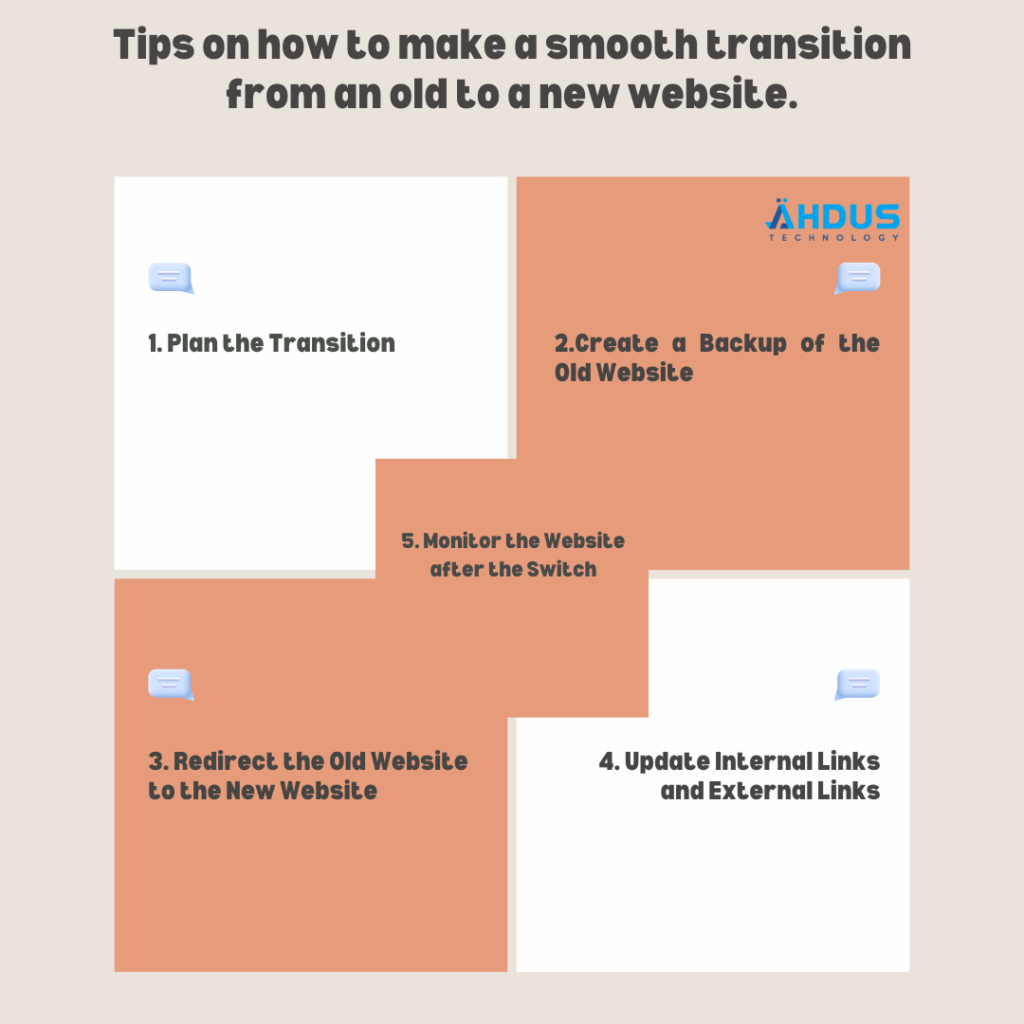In today’s digital era, having a website is essential for businesses to establish their online presence. Websites serve as a platform for businesses to showcase their products and services, connect with customers, and drive sales. However, websites can become outdated and require upgrading to keep up with the changing trends and technologies. When transitioning from an old to a new website, it’s important to ensure a seamless switch to avoid losing valuable data, traffic, and revenue.
When should you consider making the switch? Aside from assessing your branding and messaging, it’s crucial to review the compatibility of your website with current technology. An important factor to consider is mobile responsiveness, as most online users access websites via their mobile devices. Businesses must ensure that their website is set up to provide a seamless user experience across all devices, allowing users to access their products and services without any hindrance.
In this article, we’ll discuss some tips on how to make a smooth transition from an old to a new website.

1- Plan the Transition
Before making the switch, it’s important to have a well-defined plan that outlines the steps involved in the transition process. The plan should include a timeline, goals, and a contingency plan if something goes wrong. It’s also important to involve all stakeholders in the planning process to ensure everyone is on the same page and avoid misunderstandings.
2- Create a Backup of the Old Website
Creating a backup of the old website is crucial to avoid losing valuable data during the transition process. The backup should include all website files, databases, and content. This ensures that you can easily revert to the old website if anything goes wrong during the transition process.
Set up the New Website on a Test Server
Before making the new website live, setting it up on a test server is important to ensure everything is working correctly. This includes testing all the website links, forms, and functionality. Testing the website’s speed and performance is also important to meet your expectations.
3- Redirect the Old Website to the New Website
Once the new website is set up and tested, it’s time to redirect the old website to the new website. This ensures that any traffic to the old website is redirected to the new website, minimizing potential traffic or revenue loss. It’s important to set up the redirects correctly to ensure that all the URLs on the old website are redirected to the corresponding pages on the new website.
4- Update Internal Links and External Links
After redirecting the old website to the new one, it’s important to update all the internal links to ensure that they point to the correct pages on the new website. It’s also important to update any external links to the website, such as links from social media profiles or directories. This ensures visitors are directed to the correct pages on the new website and helps maintain the website’s search engine rankings.
5- Monitor the Website after the Switch
After the switch, monitoring the website’s performance is important to ensure everything works correctly. This includes monitoring traffic, conversions, and user behavior on the website. Any arising issues should be addressed promptly to minimize any negative impact on the website’s performance.
Ensuring compatibility is crucial when transitioning from an old to a new website. There have been horror stories of individuals attempting to upgrade to newer PHP versions without considering the implications of their existing content and links, resulting in lost website access. Therefore, it’s essential to prioritize compatibility and contact the web hosting provider beforehand to ensure a smooth transition. Taking this step before taking down the old website is crucial to prevent any potential issues.
With this risk in mind, we understand the importance of making the transition process seamless for its clients. Additionally, new clients can benefit from our domain transfer service, ensuring a stress-free transition.
One crucial consideration for any website is security. A website without an SSL certificate is an instant turn-off for customers.
Choosing a provider that can scale with your business’s needs and help you grow is crucial. The website’s performance will degrade without a scalable package, leading to a poor user experience. Hence, planning and thinking ahead is crucial to ensure the website’s prioritization and smooth transition to our platform.
Conclusion
Switching from an old to a new website can be a daunting task, but with proper planning and execution, it can be a seamless process. By creating a backup of the old website, setting up the new website on a test server, redirecting the old website to the new website, updating internal and external links, and monitoring the website after the switch, you can ensure a successful transition. Remember to involve all stakeholders in the planning process and to have a contingency plan in case something goes wrong. Following these tips, you can smoothly transition to a new website without losing valuable data, traffic, or revenue.


